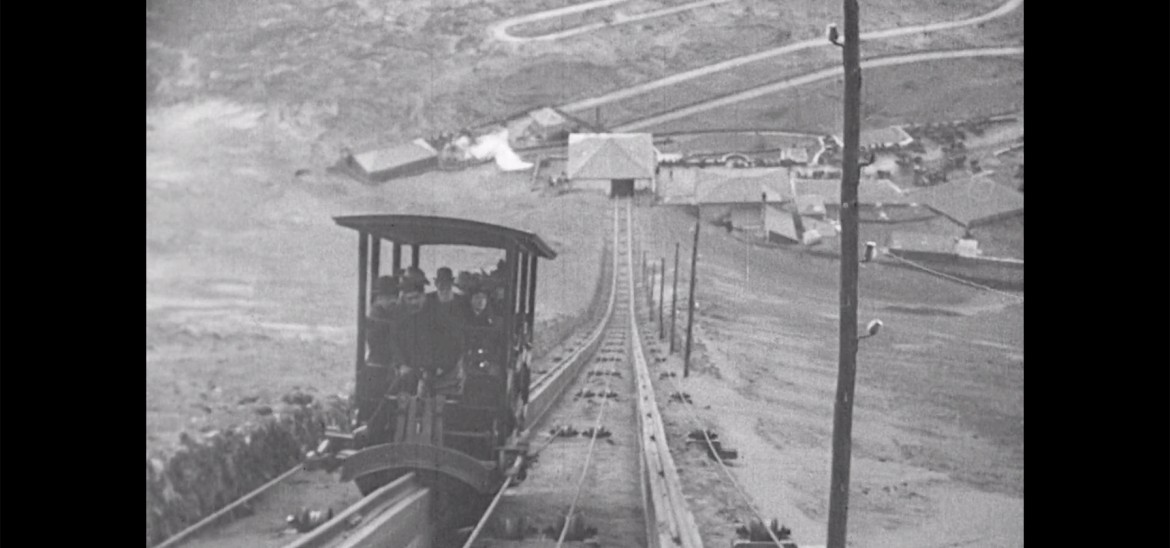Into Film Clubs
Find out everything you need to know about starting an Into Film Club.



In 2019, to celebrate the 200th anniversary of Queen Victoria's birth, the BFI made available all of its collections from the first six years of film (1895-1901). Around 700 surviving titles were researched, digitised and in some cases restored, and have all been made available for free online.
This article explores the innovation of the phantom ride, a type of film which became popular at the time, and also gives some tips on how to make one of your own.
As well as capturing natural movement, early film also held an instant fascination with mechanical motion. In the train, cinema found a technology to rival its own wonders, and early train films are often records of one modern technology marvelling at another. It was a relationship that, in a way, began much earlier; through the train carriage window, passengers were offered a cinematic experience years before the emergence of cinema itself. With the ‘phantom ride', these two technologies were fused together to produce an all-new visual spectacle.
It sounds scary, but a phantom ride doesn't actually have anything to do with ghost trains or spectral appearances! The earliest phantom rides were films shot from the front of moving trains, although they were not limited to that mode of transport. These films would present the journey from the train's perspective - cameramen would literally strap themselves and their cameras to the buffer of a speeding train. From this position, the film would appear to be moving thanks to an invisible force, hence the name ‘phantom ride', by which they soon came to be known.
The first phantom ride, The Haverstraw Tunnel, was made in America in 1897. The concept quickly caught on in Britain and filmmakers delighted in presenting many impossible points of view shot from other types of transport - by cameras travelling up mountains, along rivers and even in hot air balloons.
Hop aboard the famous Georgetown Loop Railroad and hold on to your hat as it speeds through the spectacular Rocky Mountains! (Courtesy: BFI National Archive)
This surprisingly long film (running at just over six minutes) was shot from the driver's platform of a tram on a single journey through the city centre. (Courtesy: BFI National Archive)
This incredible shot shows a row of warships (six are visible) forming a line and at full steam. The scene is filmed from the stern of one of the ships.(Courtesy: BFI National Archive)
Since the camera was usually stationary in Victorian films, phantom rides presented a dynamic new style of filmmaking. Although it was the speed, motion and unique perspective that were the main pleasures of the phantom ride, the films' exotic subjects offered up another thrill for audiences. Early British phantom rides were filmed along local tracks, but filmmakers soon became more ambitious and British cameramen were sent all around the world to film rides through foreign lands. In the same way, filmmakers came from overseas to Britain to record and share the landscape of the UK.
An unusual view of Paris, shot from a boat travelling down the Seine. You can even see the Eiffel tower - almost! (Courtesy: BFI National Archive)
One of the earliest films to be shot in India, apparently from the perspective of a boat travelling along the Hooghly river, a tributary of the Ganges. However, although the title states that this is Calcutta, the footage was in fact shot in Varanasi (also on the Ganges). (Courtesy: BFI National Archive)
From trams, trains and boats - thanks to the innovation of Victorian filmmakers, we can still experience the thrills of a phantom ride from over a century ago. Now it's your turn to film a fun journey with your class.
All you need is a smartphone, tablet or any device to record a short film from a moving mode of transport - this could even just be a pair of walking legs! Young people can also create their own to share with their Into Film Club or class - perhaps they record a journey to or from school, or make a film in the local park (swings, slides and roundabouts all provide excellent opportunities to record motion). Whichever transportation they choose, filmmakers will need to find a safe position to film from, with a clear, unobstructed viewpoint.
In this video, Bryony Dixon (Silent Film Curator at the BFI National Archive) provides some suggestions on how to approach making a phantom ride. A few more pointers:
This article was adapted from material available in the BFI's free online course The Living Picture Craze: An Introduction to Victorian Film, currently available on FutureLearn.
Gemma Starkey is a producer and educator at the BFI.
Once you've made your film, why not share them with Into Film on social media, or enter them into our ongoing Film of the Month competition? Good luck! We look forward to seeing your phantom rides!
Here are some modern examples which you could show your class for contemporary inspiration.
In this clip from a BBC One programme, a camera is fitted to a traditional reindeer sleigh for a magical journey across the frozen wilderness of the Arctic.
This music video for a The Chemical Brothers song is a phantom ride, shot from a train window.
This art film takes the concept of the phantom ride to strange new places, using a train-mounted camera - and some digital trickery - to show us a multitude of worlds all at once.
Hold on to your lunch for this phantom ride, which places the camera on the front of The Gelmerbahn - the highest rollercoaster in the world!
Another music video, this playful phantom ride places the camera at the front of a toy train as it travels a LEGO® track surrounded by musicians and other props.
Viewing 4 of 4 related items.

Find out more about our streaming service, designed specifically for UK schools.